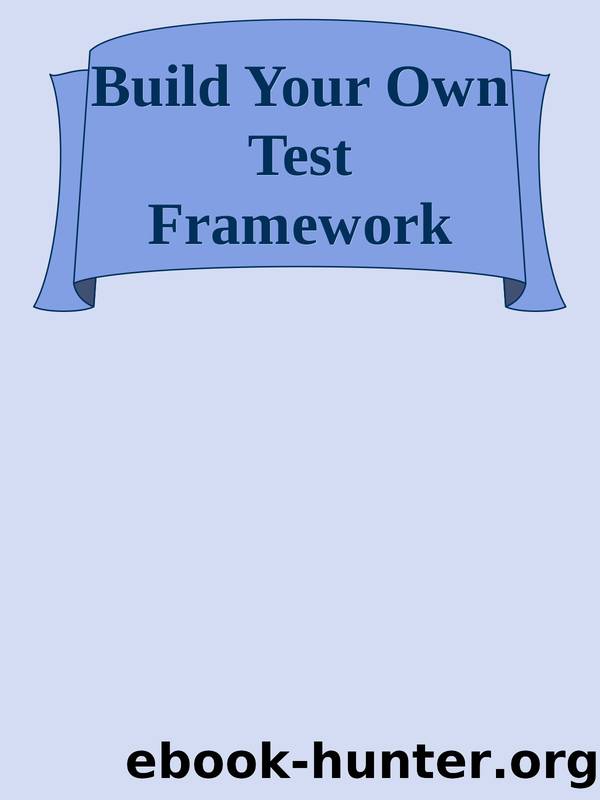Build Your Own Test Framework by 2023

Author:2023
Language: eng
Format: epub
CHAPTER 6
Formatting
Expectation Errors
One of the signs of a âgoodâ test is that when it fails, it very quickly pinpoints to you why it failed so that you can get to fixing the problem quickly.
To that end, our current expectation errors are not as helpful as they
could be. In Chapter 5, you saw how matchers are used to output âprettyâ
expectation failure messages. However, when a failure occurs, weâll also get an exception stack trace printout, and itâs this that we can improve on.
In this chapter, weâll take the stack trace and rework it into something
thatâs directly useful to your test runs.
By the end of the chapter, youâll have seen how to dig into the V8 API,
which underpins Node, to extract the constituent parts of a stack trace and format them appropriately for a terminal.
Utilizing Stack Traces with
Testing Workflows
A standard stack trace includes a list of call sites that highlight each entry in the call stack where an exception originated from. Each call site is made up of four parts:
⢠A function name, if the call site is within a function
⢠A file path, if the function was defined within a script
© Daniel Irvine 2023
101
D. Irvine, Build Your Own Test Framework, https://doi.org/10.1007/978-1-4842-9247-1_6
Download
This site does not store any files on its server. We only index and link to content provided by other sites. Please contact the content providers to delete copyright contents if any and email us, we'll remove relevant links or contents immediately.
Deep Learning with Python by François Chollet(15897)
The Mikado Method by Ola Ellnestam Daniel Brolund(13160)
Hello! Python by Anthony Briggs(12990)
OCA Java SE 8 Programmer I Certification Guide by Mala Gupta(12175)
Dependency Injection in .NET by Mark Seemann(12027)
Algorithms of the Intelligent Web by Haralambos Marmanis;Dmitry Babenko(10799)
The Well-Grounded Java Developer by Benjamin J. Evans Martijn Verburg(10614)
Grails in Action by Glen Smith Peter Ledbrook(10095)
Secrets of the JavaScript Ninja by John Resig Bear Bibeault(9972)
Kotlin in Action by Dmitry Jemerov(8687)
Test-Driven iOS Development with Swift 4 by Dominik Hauser(8634)
Becoming a Dynamics 365 Finance and Supply Chain Solution Architect by Brent Dawson(8013)
Microservices with Go by Alexander Shuiskov(7784)
Practical Design Patterns for Java Developers by Miroslav Wengner(7671)
Test Automation Engineering Handbook by Manikandan Sambamurthy(7623)
Angular Projects - Third Edition by Aristeidis Bampakos(7104)
The Art of Crafting User Stories by The Art of Crafting User Stories(6567)
NetSuite for Consultants - Second Edition by Peter Ries(6495)
Demystifying Cryptography with OpenSSL 3.0 by Alexei Khlebnikov(6271)
